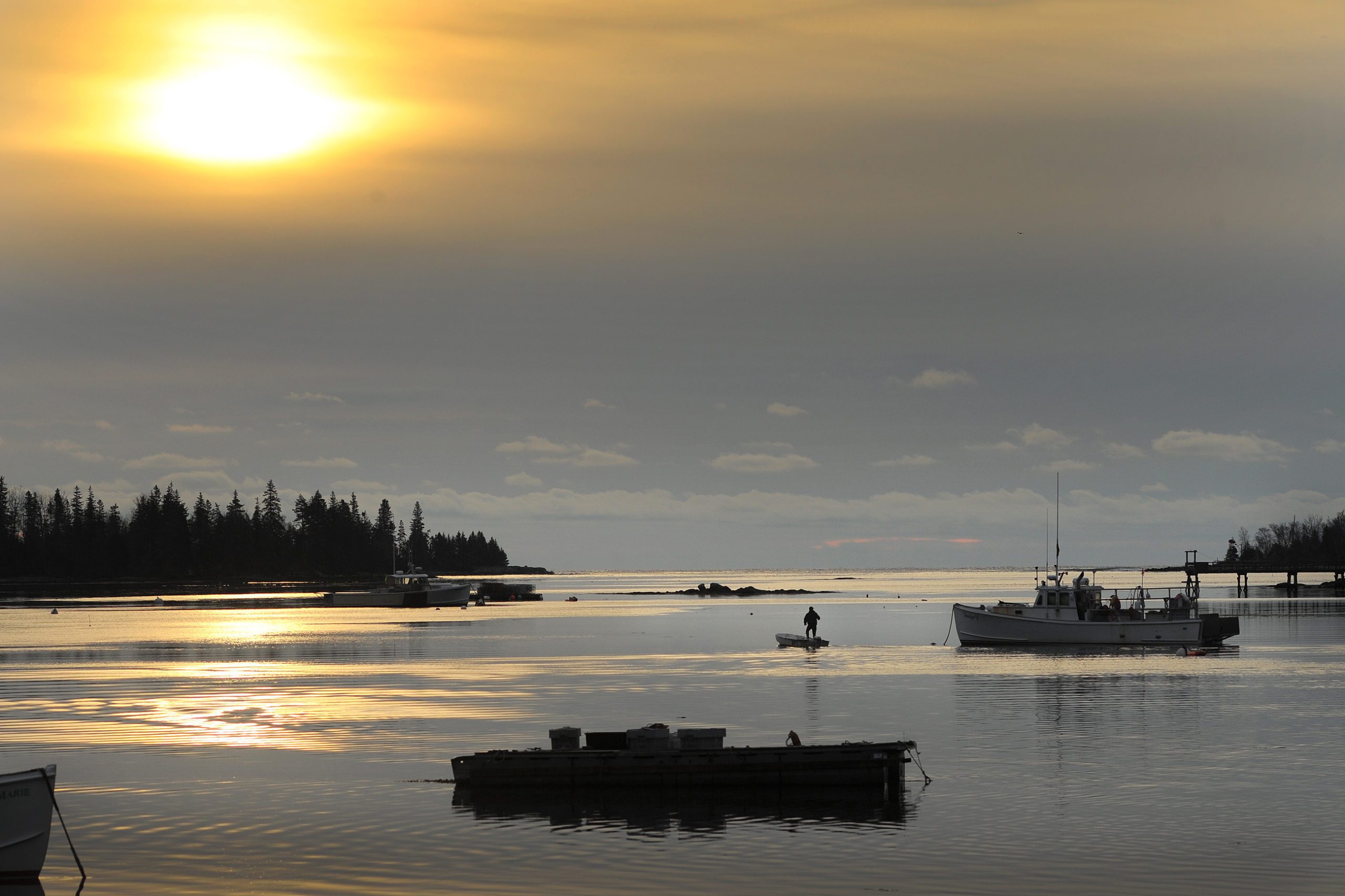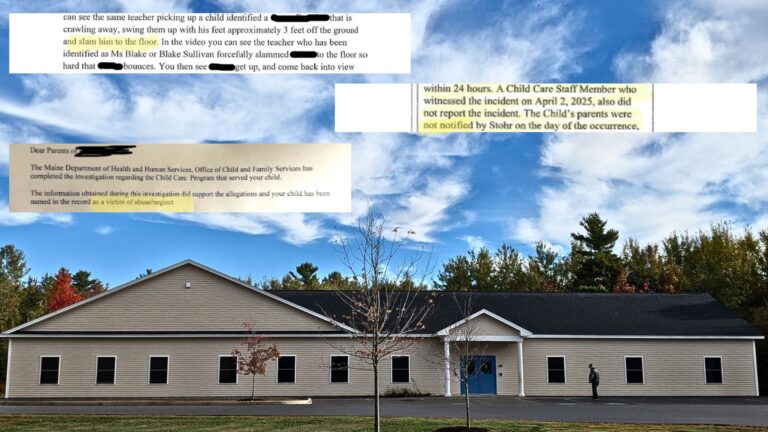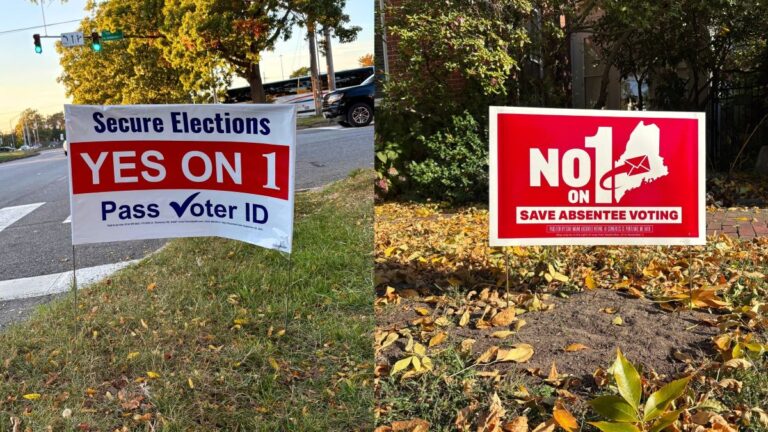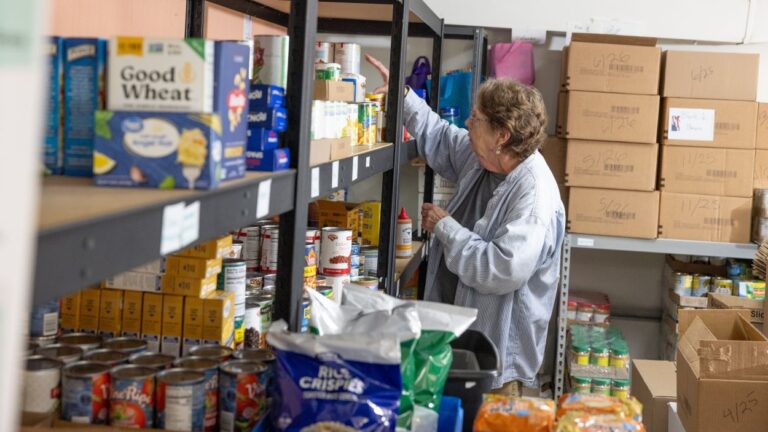Federal fishing regulators are close to finalizing new rules that would require expensive gear modifications and seasonal fishing closures in Northeast waters to protect the endangered right whale. Maine regulators and fishermen fear the rules would jeopardize Maine’s billion-dollar lobster industry while environmental advocates argue they don’t go far enough.
The public comment period closed March 1 after the National Oceanic and Atmospheric Administration (NOAA) hosted virtual public hearings on Feb. 23 and 24. Now, federal regulators are sifting through about 170,000 public comments to incorporate any extra information into their analysis before drafting the final environmental impact statement they hope to release by this summer.
The rule changes, if incorporated, likely wouldn’t go into effect until late 2021 or early 2022.
During the final public hearings, Maine Department of Marine Resource Commissioner Patrick Keliher echoed a statement put out by Gov. Janet Mills earlier that week stating that “a one-size-fits-all approach in the state of Maine will not work.”
Fishermen and environmentalists voiced concerns over the science federal regulators were using to make decisions, including the number of right whales alive today, how many have been harmed by entanglements or struck by ships and the effectiveness of proposed gear changes.
“We all agree on one thing,” said Matt Gilley, a Harpswell lobsterman who spoke up at the virtual meeting. “That is that the data is flawed. In what direction, that remains to be seen.”
The rule changes were drafted last spring and mark the most recent move to reduce the risk of endangered whales being entangled in fishing gear through NOAA’s Atlantic Large Whale Take Reduction Plan. Two new modifications are being proposed based on the data in question — weak rope insertions and adding more traps per trawl.
Weak insertions would require fishing lines to have weak points to make it easier for whales and marine animals to disentangle themselves if they get caught. The weak insertions would also force rope attached to crab or lobster pots to break off more easily, meaning potential revenue losses for fishermen and more ghost gear circulating in the ocean.
The other major modification proposal would require fishing with more pots per buoy line. The new practice, called trawling up, would reduce the amount of lines in the water but increase the weight on each line.
Together, the two changes are expected to cost Maine fishermen between $3-10 million, which accounts for 1 to 2.5 percent of the total value of the fishery, according to NOAA.
Environmental groups like Conservation Law Foundation and The Pew Charitable Trusts pointed to the entanglement data being outdated and weak rope gear modifications combined with trawling up not being sufficient to help whale populations bounce back. NOAA reported there are less than 400 North Atlantic right whales left.
“I don’t think the industry or the scientists or NGOs like the idea of (trawling up) much,” said Katharine Deuel, marine conservation officer at The Pew Charitable Trusts. “It’s been tried before, it hasn’t really seemed to reduce risk, and it is potentially more dangerous for fishermen and without enough of a conservation gain.”
Fishermen and Maine regulators also told The Maine Monitor that trawling up would be risky for Maine fishermen because it increases the risk of being pulled overboard and drowning with more weight on the line.
“Trawling up is the main issue for me,” said Jack Thibodeau, a 19-year-old lobsterman from Cumberland who upgraded to a bigger lobstering boat last week to get ahead of meeting trawling up regulations. “This is creating a lot more danger for a lot of guys.”
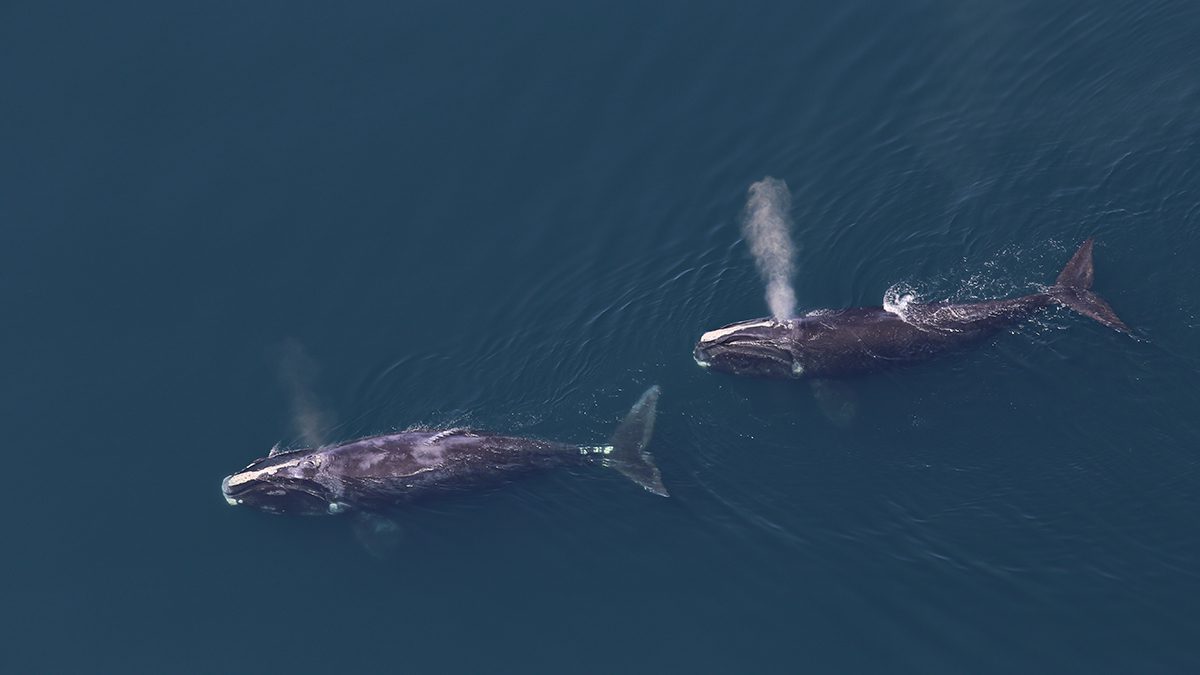
Maine’s rugged coastline harbors fishing environments that accommodate a diverse commercial fishing fleet of different-sized boats, gear types and fishing styles. The fleet diversity allows fishermen to chase lobster near and far offshore year-round, which could change; the federal rule change proposes shutting down the fishery from October through January, when whales travel up the Atlantic, congregating off the coast of Massachusetts and Canada to mate, breed and eat in winter hotspots.
Rep. Genevieve McDonald (D-Stonington) sees the diverse fleet as a major factor that keeps Maine’s lobster industry successful.
“We’re asking for a tremendous amount of work for Maine lobstermen to the point where we’re creating safety hazards and the potential to really devastate the future sustainability of the industry,” said McDonald, who has been a commercial fisherman for 15 years. “These are some really big asks, and then out of that we aren’t actually saving the right whale.”
While environmental groups agree the proposed rule changes are insufficient to save endangered right whales, they are pushing for more precautionary rules.
“We’re in ICU,” said Erica Fuller, a senior attorney at the Conservation Law Foundation who focuses on ocean health. “We have to do more than we are currently doing if we want to save this species.”
Conservation Law Foundation is one of a handful of groups suing NOAA for more immediate action to protect the North Atlantic right whale under the Endangered Species Act. The groups pointed out that 85 percent of North Atlantic right whales bear entanglement scars and referenced a study citing depleted health and lower birth rates as a result of entanglement — critical to species recovery.
“We can’t wait until we have all the answers, the population is declining so quickly,” said Colleen Coogan, who coordinates NOAA’s take reduction team. “But on the other hand, as a fisherman, I cannot show you a whale in Maine gear today.”
The take reduction team develops rules for fishing gear to minimize risk to whales. Federal data has not attributed any whale entanglement deaths to Maine fishing gear in at least 10 years, and researchers have only been able to pinpoint the origin of the gear in about a quarter of the cases.
Maine lobstermen began the expensive and time-consuming process of marking their gear last year to comply with federal regulations in support of struggling whale populations.
“Maine has always said we will do our part to protect right whales,” said Kristan Porter, president of the Maine Lobstermen’s Association. “It’s not only going to be costly to modify your gear, it’s going to be costly because you’re going to have less income. And for what? For a fishery that hasn’t had a documented entanglement since 2002.”
While fishermen are asking for better science before regulations go into effect, scientists say documented entanglements are underreported while federal regulators will continue to weigh the issues.
“I get why fishermen feel like it’s unfair,” said Coogan from NOAA. “Only one in every 10,000 lines interacts with the whale — and we don’t know which one it is — so we have to regulate all the lines.”
Though it may be costly and cumbersome for fishermen, scientists say change is inevitable.
“Whales and New England’s lobster fishery can both exist, but the fishery will need to make some changes,” said Deuel. “We don’t have an ability to influence the whales’ behavior. We can only change our own behavior.”


